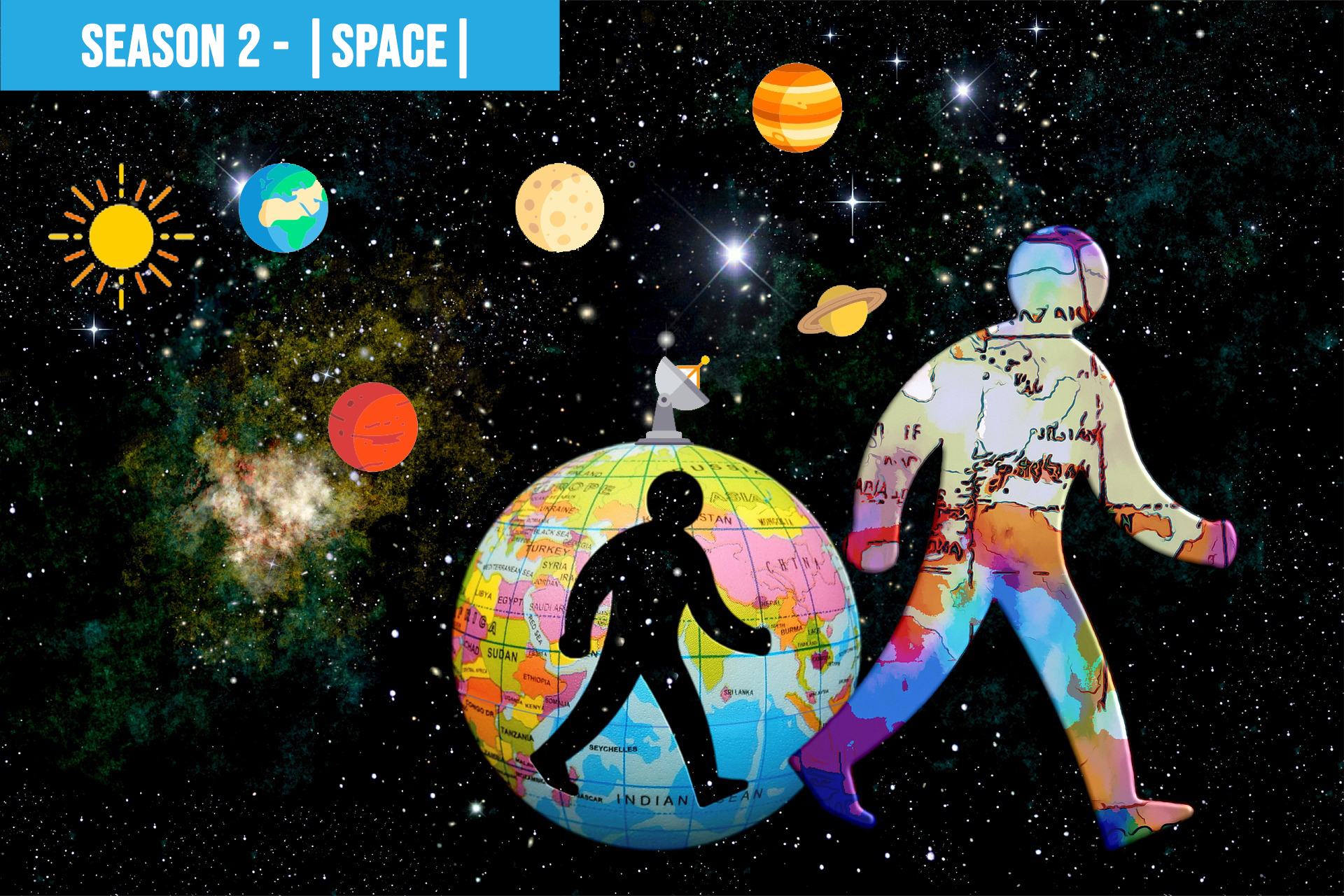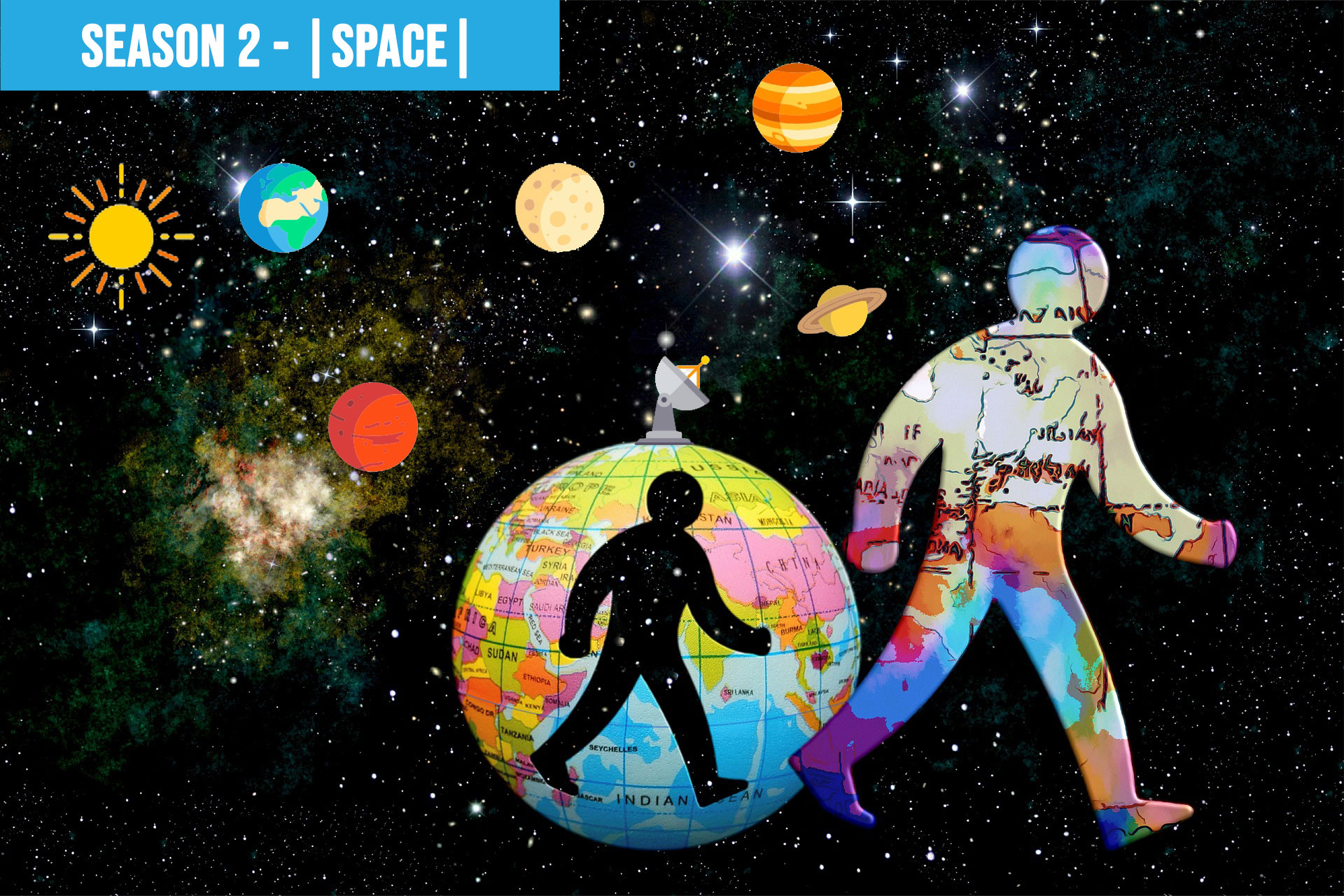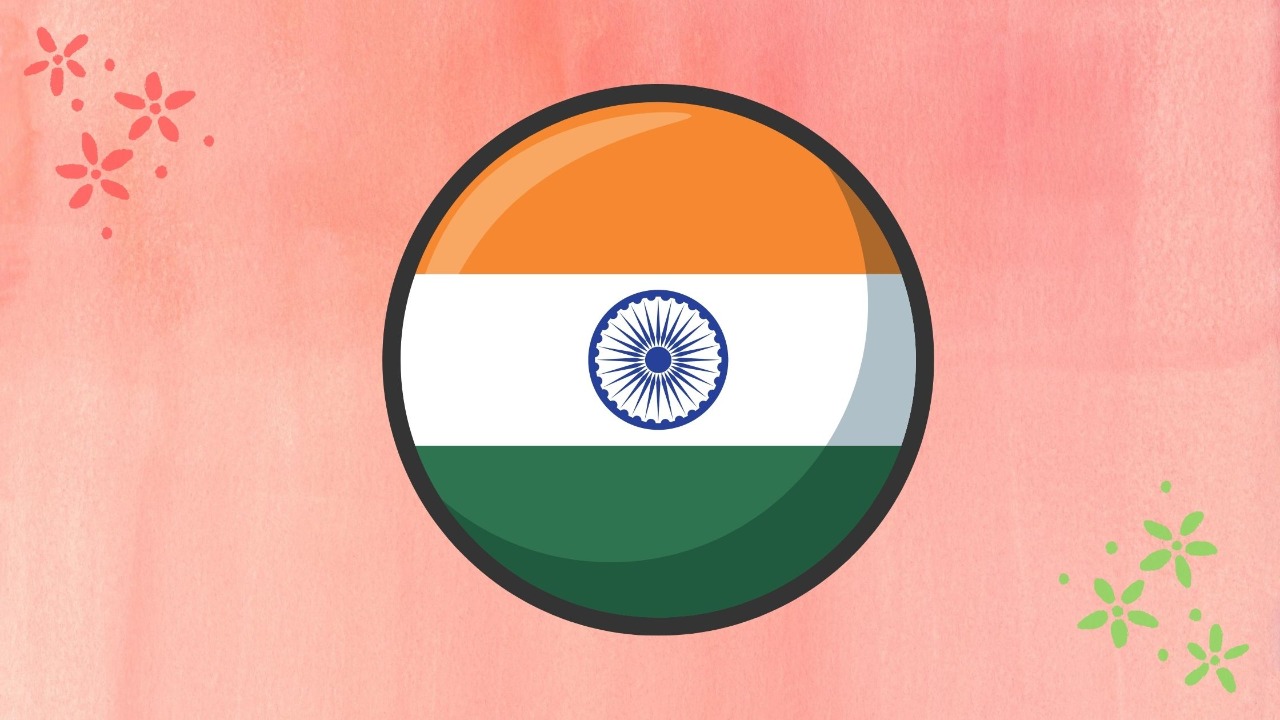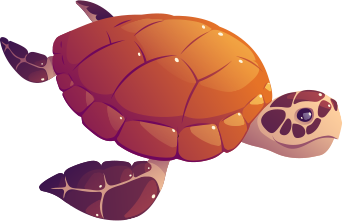030: Satellites and Space – Part 1
Transcripts
EPISODE – 030 SATELLITES AND SPACE – PART1
[0.01] {Background Music}
[0.09] Siyona: Hi all, welcome back to my podcast Little Mind Chats. Minds are little, not our thoughts. I’m your host Siyona. We’ve known a lot about the solar system, the universe, black holes and even took a deep dive into what stars are. But the actual punch in exploring space comes from the technology we use as humans to keep learning more and more. Yeah, you’re right without technology and particularly satellites, we probably never understand space as much as we do today.
[0.46] Siyona: Today, we have the all versatile scientist who we are already familiar with and really love how he walked us through our solar system Dr. Guruprasad. If you remember, I’d introduced him in episode 16. He’s among those people who guides the Encyclopaedias and teaches the teachers about Space and Astronomy. He has worked as a scientist and science Communicator in ISRO for about 37 years. During his time, he was part of 25 Indian satellite missions. And of course, he has written 12 books and 500 articles on Astronomy and Space and was invited by various other countries to guide their “Space Education for young people”.
[1.36] Siyona: Hello Dr. Guruprasad. I’m super happy to welcome you back to my show. Thanks for accepting our invitation again.
[1.46] Dr. Guruprasad: Thank you Siyona. I’m equally happy to come to your podcast. I’m very happy to share my little knowledge for the benefit of many, through this podcast. It is very nice to be back to your show. About artificial Earth satellites.
[2.08] Siyona: So, let’s give a start then! “I’ve heard there are over 2,600 satellites orbiting Earth right now. Isn’t that a crowd in the space?”
[2.20] Dr. Guruprasad: Yeah, it’s a very good question. Yes, there are about 2,000 working satellites, which are whizzing round or circling the Earth. But space is so vast, all of them are not very near to each other and they are circling the earth in different orbits at different heights. But within 500 kilometres from the Earth’s surface, it is becoming too crowded nowadays. But anyway, Siyona don’t worry the traffic problem in space is not as great as it is in Bangalore.
[3.04] Siyona: ha ha. (laughs)
[3.06] Dr Guruprasad: Or for that matter, not only Bangalore, any other Metropolitan city in India kind of traffic problems we have all over the world. That is far, far worse compared to whatever we are facing in space. And before you go to the next question, let me tell you something about satellites. Let me introduce them. When we use the word satellite, we always say artificial Earth satellite. The word Satellite was used earlier for a much smaller body orbiting a planet, which in turn orbits the Sun. Am I Correct?
[3.43] Siyona: Yes.
[3.44] Dr. Guruprasad: That’s the way it is. So, a smaller body orbiting a planet was known as a satellite. That was till October 4th 1957. How many satellites till then Earth had at least as we Know, only one. The Moon, the Moon is a satellite of the Earth. And like that Mars has two satellites, Jupiter has got more than sixty I told you. Saturn nearing that, Uranus 28 or 30 or even more. Neptune also more than 10. Okay? Even more than that. But Moon was circling the Earth for billions of years. Let us say, at least 3.5 to 4 billion years.
[4.32] Siyona: Hhmm.
[4.34] Dr. Guruprasad: And even today it is circling the Earth. But on October 4 1957, Moon got a tiny, tiny, tiny, tiny competitor. Okay? On that day, the former Soviet Union launched a hollow sphere, a metallic object with Ariel’s coming out like sticks. It launched the hollow sphere weighing 84 kilograms into an orbit around the Earth that it made object to circle the Earth. That was called by the name Sputnik 1. Sputnik means in Russian ‘A traveling companion’. So, Sputnik 1 became the world’s first artificial satellite. From that time onwards since, thousands of satellites have been launched. So, Moon and other naturally occurring bodies are known as natural satellites. And objects which have been made to circle the Earth with the help of rockets, they are known as artificial satellites. So, artificial Earth satellites are the ones which have been launched into Earth orbits by human beings using Rockets. But Earth is not the only body which is having the artificial satellite. Today moon has artificial satellites. Then, Mars has got artificial satellites. Venus has got artificial satellites. Mercury has got artificial satellites. Jupiter has, Saturn had nothing. Uranus, Neptune doesn’t have natural satellites. Okay?
[6.24] Dr. Guruprasad: Now today, we will localize our discussion to artificial Earth satellites. They are in short; they are known as satellites. Liked it?
[6.34] Siyona: Yeah, it’s quite interesting how you know the exact date of when satellites were called like only natural satellites like Moon’s, and then I think it’s a bit funny where they are putting satellites on satellites. For example, satellite for the Moon.
[6.54] Dr. Guruprasad: Yes, you said that. Moon is the natural satellite of the Earth. And there are artificial satellites circling our natural satellite. Okay?
[7.04] Siyona: Yeah. (laughs)
[7.05] Dr. Guruprasad: In 2008, India put chandrayaan-1. Chandrayaan-1 means Moon’s spacecraft in Sanskrit. It made that spacecraft to go around the moon. Not Earth, the Moon. So, Chandrayaan-1 became the artificial satellite of our natural Satellite. Okay? Funny, no doubt about it.
[7.29] Siyona: That’s very interesting. My next question is, “what are the different kinds of satellites?
[7.36] Dr. Guruprasad: What are the different kinds of Satellites? Okay. Quite a short question but there are many, answers has to be very long. See, how do you classify satellites into different types? You can classify satellites depending on their use. For example, there are communication satellites which (which which) helps us in doing many things including television broadcasting internet data relay. telephone phone calls relay and such things. And there are weather satellites or they are also known as meteorological satellites. They take weather pictures of the earth, which will help you to accurately forecast the weather.
[8.24] Siyona: Yeah.
[8.25] Dr. Guruprasad: Similarly, there is a third kind of satellites known as remote sensing satellites. They can take crystal clear pictures of the surface of the Earth from Earth orbit itself. So, what is the use of that? I’ll come to that and can use them for many uses. They have many uses. They help us to survive our natural resources. Both kind of satellites are known as navigation satellites. They help us to know our location very, very carefully. We can know our position very accurately on the surface of the Earth using navigation satellites. You know about GPS by any chance?
[9.07] Siyona: Yeah, I’ve heard of Global Positioning System.
[9.11] Dr. Guruprasad: GPS is for example, that is a system which consists of many navigation satellites launched by the United States of America. For example, look at look at this mobile, my iPhone, which has got a GPS receiver. So, I can know where I am. And there are satellites, which instead of looking down towards the Earth, to take whether images or even to survey our natural resources or to relay Communications, TV channels or telecommunication messages and all those things. They look up that is, towards the other parts of the universe and help us understand the many things about this universe. You know, Mr. Madhusudan talked to you about the black holes, neutron stars and even Dr. Shailaja have talked to you about the Stars, about their birth and all those things.
[10.09] Dr. Guruprasad: So, all these get lot of help from scientific satellites.
[10.15] Siyona: It does give me and it does clear one of my doubts. Like when I was little in UK, I heard this word called sat-nav, and then somebody told me possibly my teachers told me that it was a satellite navigation. Now, you’ve explained this. It’s a lot clearer.
[10.36] Dr. Guruprasad: Yeah, satellite navigation means navigating with the help of the information sent by satellites. But Siyona, I would like to tell you one thing, our own country India has got a navigation satellite system of its own. Do you know that?
[10.54] Siyona: Really?
[10.55] Dr. Guruprasad: Like GPS, which is American, we have our own navigation satellite system. But you cannot use it all over the globe like GPS. Near India, in India and Near India you can use it without any problem. It is called as Navi. Navi group of satellites, navigation with Indian constellation. They are called as Navi satellites, they help us to know our position very, very, very accurately. If you are traveling in the air, if we are traveling on the road or if you are traveling in the sea in and around India, you can know your position very accurately using our own set of navigation satellites. Got it?
[11.39] Siyona: Yeah. Now that was one thing that I never knew.
[11.43] Dr. Guruprasad: Yeah.
[11.45] Siyona: The next question is, “can we not have just one satellite to do all the jobs?”
[11.52] Dr. Guruprasad: Yeah, that’s a very interesting question. Can one teacher teach all the students?
[11.58] Siyona: No.
[11.59] Dr. Guruprasad: Different classes at the same time? Using a webinar or podcast like this, one can reach large number of people. But one set of people. I am now talking to children and young students. But I cannot reach researchers at the same time. So, you cannot have only one satellite to do all the things. Another problem here is, the task or the work which you want a satellite to do, for doing that work, it has to be in any particular orbit. For example, if you want to take crystal clear pictures of the earth, you have to make the satellite to go around the Earth in an orbit which is very near to us, the Earth’s surface. Similarly, if you want to put a navigational satellite, so a navigational satellite actually can be launched into 36000 kilometres high orbit. Or it can be sent to a 20,000 kilometres orbit. And if you want to launch a satellite for communication purpose, then the most suitable orbit is known as geostationary orbit. This you should know. Okay? One thing Siyona, I would like to tell you, the time taken by a satellite to go around the earth once, that depends on the height at which the satellite is circling the Earth. Okay?
[13.31] Siyona: Yeah.
[13.33] Dr. Guruprasad: So, a satellite which is circling the earth at a height of 200 kilometres from the Earth surface, will Zoom around the Earth once in one and a half hours.
[13.45] Siyona: Wow, that’s quick.
[13.47] Dr. Guruprasad: You say hi to the satellite and after one and a half hours, it would have circled the entire Earth and it might come back. But if you put a satellite into a height of thousand kilometres and make it to circle the Earth, it takes say instead of one and a half of hours, it would be one hour 40 minutes or nearly two hours kind of thing. If you go on increasing the height, that is the height of its orbit, then the time taken by the satellite to circle the earth once goes on increasing. Am I correct?
[14.23] Siyona: Yeah.
[14.24] Dr. Guruprasad: Then there is one thing, special thing here. If you launch a satellite into an orbit which is 36,000 kilometres, I repeat 36,000 kilometres from the surface of the Earth. That is one tenth of the way to Moon. Okay? To that orbit if you launch, then the satellite takes exactly 24 hours to go around the Earth. Now I’ll ask you one question. How much time does the Earth take to spin around its own axis once? Do you know?
[15.00] Siyona: 24 hours.
[15.02] Dr. Guruprasad: Yes. It is 24hours. So, the time taken by the Earth to spin around its own axis is 24 hours and the time taken by the satellite to round the Earth is also 24 hours. Means the satellite behaves as though it is standing still over you. You understand?
[15.22] Siyona: Oh, yeah.
[15.24] Dr. Guruprasad: This is a little trick. Because of that, because of that the satellite appears as though it is always standing still over. Then, what do you do with that? Yes, you can use the satellite as a giant mirror kind of thing. You transmit TV programs to the one satellite; it can spread it all over the country or all over the continent. Similarly, you transfer you relay telephone messages? Yes, it can amplify and reflect it back. Okay? You can send internet data, it does that. Today you are able to see my picture and hear me probably to a certain extent, the information is going through the satellite like this. Do you know that?
[16.11] Siyona: Oh my gosh! (surprised). Satellites are helping me in my podcast?
[16.15] Dr. Guruprasad: Yeah. Yeah, yeah. Why not? Internet when we put it through your website, when they see all over the world, it is through satellite. Chances are that, definitely they go through many satellites. Not one satellite. Depending on where they are. So, satellites are very, very, very, very important to a communication satellite.
[16.39] Siyona: I like satellites all the more now.
[16.41] Dr. Guruprasad: So, I told if you want to take crystal clear pictures of the Earth, you put a satellite and then into an orbit so that it circles the Earth at 500 kilometres within 500 kilometres. If you want to put it make it a navigation satellite place it in 20,000 kilometres or more. If you want to make a satellite a communication satellite, then you have to put it to a height of 36,000 kilometres. One tenth of the way to the Moon. Yeah. So, similarly scientific satellites depend on depending on what you want to see study, whether you want to study the different galaxies or if you want to study the Sun and all those things. The height at which circles the Earth decided by some by whatever work it does. So now you got the answer to the question why we can’t have a single satellite and what are the different types of satellites. Did I answer your question?
[17.42] Siyona: Yeah. Actually, I have no questions.” I’ve heard of space debris. Does that come in the way of these satellites?”
[17.54] Dr. Guruprasad: Yeah, of course, of course. In the beginning itself that traffic problem in space is not as bad as it is in any of the major cities in our country, our city or any other big city in the world. Okay? Whether it is in America, similarly due to lots and lots of satellites, managing them in orbit safely. It is not easy. But still, you know collision of (dashing) of one satellite into the other is a relatively very, very rare. Only a few incidents like that have happened in the past 60 plus years since Sputnik 1 was launched on October 4th 1957 by heralding the space age. And next thing is you mentioned about space debris, space debris means what. From 1957 onwards nearly 9,000 plus satellites have been launched.
[18.59] Siyona: 9000?
[19.00] Dr. Guruprasad: 9000 satellites have been launched by 40 different countries. Do you know? Then out of that 9,000 satellites only 5000 are still circling the Earth. What happened to the other 4,000? They have slowly re-entered the Earth’s atmosphere and if they have burnt up in the Earth’s atmosphere like meteors. You know what is a Meteor. Isn’t it?
[19.29] Siyona: Yeah.
[19.30] Dr. Guruprasad: Like a streak of light suddenly in the sky that is called as a meteor. That is called as a Meteor. That is nothing but the entry of a small object, a very small object like a grain or a sand or a bit larger than that into the Earth’s atmosphere at a very high speed where the friction with the air molecules makes it to break up and burn up. So that phenomena are called as Meteors. So, these satellites, out of 9,000 satellites large so far, 4000 of them have re-entered the Earth’s atmosphere and burnt up. Let me tell you space is outside the Earth’s atmosphere where there is no air. So, space is the place where satellites are circling the earth. So, when they come down and re-enter the Earth’s atmosphere, because of air there will be friction with the air molecules and they burn up. So anyway, these 5,000 satellites are circling the earth of which only 2000 of them are working, the other 3000 can be considered as space debris, that is useless junk which is circling the Earth.
[20.51] Siyona: “Who decides how many satellites go into the space? If US alone has 830, where and how can other countries launch theirs? “
[21.04] Dr. Guruprasad: United States of America may have 800 satellites. But I told you even today about 5,000 satellites are circling the earth. Space is so vast. It is three-dimensional. It is not like on the floor or on the table. You have, you can draw a straight line like this and another line perpendicular to it. For example, take the case of a table. It is two-dimensional. Length and breadth, you have okay? Tabletop, I’m telling. So, space is 3-dimensional. So, lot of satellites can be there. It doesn’t matter because Earth is so huge and the space around that itself is so huge. We cannot imagine even grown-ups cannot imagine for you children it is not easy to imagine that. It’s so vast. That is why many satellites can be there. For example, let me give you one information. You know in India, we have more than 50 Satellites. We have built, in India we have built more than 110 satellites till now.
[22.08] Siyona: Oh really!
[22.09] Dr. Guruprasad: Of which many of them have re-entered the Earth’s atmosphere as I told you. But, more than 50 of them are still circling the earth. And let me tell you, do you know two of our satellites are circling the moon and one Indian satellite is circling Mars. Do you know that?
[22.30] Siyona: Oh, yes, I do.
[22.32] Dr. Guruprasad: You have to be very proud about it. The satellite which we have launched around on Mars, we wanted it to work for six months. But do you know even today, nearly seven years after its launch still it is working. That shows how capable India is. Do you know that?
[22.53] Siyona: Yeah.
[22.54] Dr. Guruprasad: Similarly, Chandrayaan1 which we launched in 2008 is still circling the Moon. Though it is not working, we don’t have any, it is not of any use now directly. But Chandrayaan2 is the latest spacecraft to be circling the moon and with its more than seven instruments, it is exploring the moon even today. One year it has successfully completed in an orbit around the Moon. So chandrayaan-2 is an artificial satellite of our natural satellite.
[23.33] Siyona: Yeah, you know what? Mission Mangalyaan is the name of the satellite that is orbiting Mars, right?
[23.41] Dr. Guruprasad: Yeah.
[23.42] Siyona: They’ve actually a movie on it. We went to the cinema and we saw the movie and in that they chose all the women to see what would happen. And then also first they wanted to launch this rocket called GSLV fat boy.
[24.00] Dr. Guruprasad: Yeah. (laughs) Actually, Mission Mangal was launched by PSLV rocket. Polar satellite launch vehicle. Do you know, how big the rocket is? It’s very small. An Indian rocket after all. How big the rocket is do you know PSLV, that launched whatever you said Mission Manga? It is as high as a 15-storey building.
[24.20] Siyona: That tall?
[24.21] Dr. Guruprasad: Imagine a 15-storey building moving. Or what a beautiful great sight it is. That big the rocket is. It launched Mission Mangal or Mangalyaan in November 5th of 2013. I was there to watch that launch as very, very fortunate to see. To see that launch, fantastic and very, very, very, very accurately. It first put Mission Mangal into an orbit around the Earth. But later, it took nearly ten months for Mission Mangalyaan to reach Mars and to start going round it. Very, very exciting. Yes, lot of lady scientists from ISRO have worked for that and two of them, I know very well we were all in the same division in the satellite Centre. And one of them even continued into Mangalyaan. Even today one of the persons who is looking at Mangalyaan space craft is a lady. Do you know this?
[25.29] Siyona: Wow, that’s inspiring.
[25.32] Dr. Guruprasad: Do you want to become a space scientist.?
[25.34] Siyona: Well, I’m might. That’s one my dream professions. It must have been a lucky sight to see Mission Mangal actually getting launched. And also imagine how big the space centre would have been just to build a 15-storey big rocket.
[25.54] Dr. Guruprasad: Yeah, you’re perfectly correct. To build such a big rocket and to place Mission Mangal on top of it, you need to have a say, a building which is as high as a 25-storey building. You know in MG road in Bangalore, you have public utility. Nethaji Subash Chandra Bose building. Have you seen that public utility building?
[26.18] Siyona: No, not yet.
[26.20] Dr. Guruprasad: That is around 23 storeys high. Imagine that kind of building. You have two buildings like that in our country. In Sri Hari Kota. I’ve been very fortunate to see many of those Rockets and I cried many times. Okay? Why? Because my country is capable of doing these things. My country is capable of building rockets like that. Which not only launch satellite into space, into Earth’s orbit or even send them towards the Moon, Mars Etc. But they are doing very, very, very, very accurate. Do you know that? What do you say about our achievements in space in India?
[27.02] Siyona: That feels really proud and inspiring. So, you know like in the movie they also showed like one of the brains behind the whole thing, She was at home and she was just getting ready to come to ISRO and then her daughter somebody was making poori and she was like “don’t waste the gas turn it off. It can run on that much gas for quite some time. Or at least until the poori is done. And they use that exact same gas saving technique to launch the rocket. How cool is that?
[27.37] Dr. Guruprasad: Yeah, Yeah, Yeah. You are perfectly correct in the sense, you know the thing is, the women scientists okay, the lady scientists who were in the Mars project or in any other project of Indian Space Programme, they have families too. They have children. Okay? They have to manage their cooks, they have to bring up their children, they have to maintain their family. As responsible members of the family, they have to take care of many things. In addition to that, they have to work as a scientist. In ISRO as I have seen, it is not that we are, nobody will say, “we are women scientists, we are ladies, we can’t do this.” Nobody says like that. Everybody is proud like an Engineer or a technician or whatnot. They work like that as Indians.
So, women are as proud and as capable as men themselves. That is why many of them have taken up very important post including the ones in Mangalyaan. So, family or looking after children and all those things is not a negative thing or it is not a limitation. At the same time, they are actually, yes efficient whether in planning a satellite mission or weather in cooking at home. As you said, let us let’s not waste the gas, and you said that make use of the fuel. So, similarly the fuel was very efficiently utilized for sending a spacecraft to Mars.
[29.11] Siyona: Yeah. Wow, that’s a very inspiring talk for future women scientists. Thank you. For all you listeners, there’s so much more about satellites coming up in part two, next Sunday. Just wait and listen to how fascinating satellites alone can get. That brings us to the end of today’s episode. If you haven’t sent in your entry for this month’s competition yet, let me tell you what it is. Nature photography. Send in your entries to siyona@littlemindchats.com or visit my website www.littlemindchats.com and send them on the competition’s page. Well then, thanks a ton for listening. Bye!
Other Interesting Episodes
08 Aug-20. by Admin
Solar System – Part 1
14 Aug-20. by Siyona
Independence Day Special 2020
No Comment Found..










